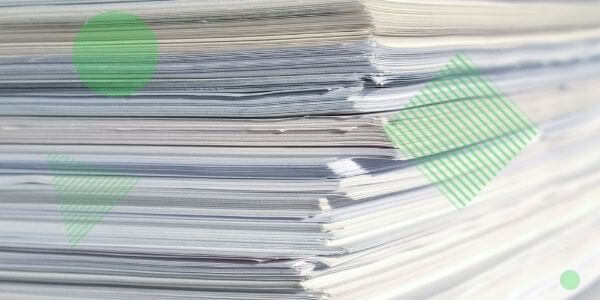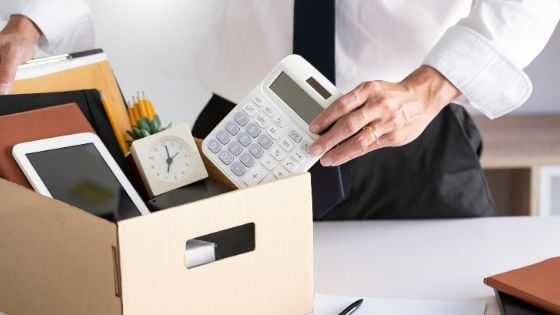A paperless onboarding process is easier than you think.
What would be the best material for the United States to make their own Great Wall of China? How about paper? Each year, we produce enough paper waste to build a 12-foot high wall of paper from New York to California! This consumption of paper costs U.S. companies more than $120 billion a year, and most of what is printed is outdated within three months.
If paper is so expensive and creates so much waste, then why do so many businesses rely on paper? Here are the most common misconceptions about a paperless onboarding process and why we’re still producing SO much of it.
Misconception: Paper is More Secure
Paperless Reality: Many businesses fear going paperless due to the misled belief physical copies are more secure. With recent technological advances and the increased use of the 128-bit Advanced Encryption Standard, passwords are the most insecure piece of going paperless. The likelihood of your digital information being stolen is far smaller than the likelihood of someone getting their hands on those printed hard copies.
Windows Azure is an example of how safe and secure your information can be. All of the data stored in their data centers are monitored 24 hours a day, 365 (or 366) days a year. If someone does have the ability to take obtain info during a transfer, the data is encrypted, preventing the thief from reading what they stole.
While neither process is 100% secure, you can rest assured that your information will be just as safe, if not safer, in digital form.
Verdict: Security is a reason to GO paperless, not to avoid it! Try going paperless with bill paying and statements. Not only will you save money on postage, envelopes and time, but running office finances online makes payments easier to track. Many banks, if not all, have already transitioned online which makes the process easier and more instantaneous.
Misconception: I Need My Hard Copy Backups
Reality: A fear many have in regards to going paperless is losing their information. It’s a lot easier to hit the delete key on a keyboard than it is to drop a hard copy in a recycling bin or shredder. Some businesses house all backup forms as paper in filing cabinets and while some hard copy backups are actually a necessary, what are the measures taken if a form is misfiled, misplaced or lost? More than 70% of today’s businesses would fail within three weeks if they suffered a catastrophic loss of paper-based records due to fire or flood.
With the availability of automatic backups to the cloud, your files and records tend to be safer in a digital format. Whether you are based in a home office, shared building or large standalone structure, your important documents are safe and business can pick up right where it left off even after a devastating loss.
Verdict: A physical backup is easier to misplace than the searchable, secure cloud. Begin transitioning internal documents and large files to the cloud with tools like Google Docs, Microsoft Office 365 or Dropbox. That way you and your team can begin taking comfortable steps toward digitization.
Misconception: A Paperless Onboarding Process Takes Too Much Time & Money
Reality: Besides the money you will save from not having to buy paper or paying for recycling, there are numerous other expenses related to not going paperless. A four-drawer file cabinet holds an average of 10,000 documents, takes 9 square feet of floor space and costs $1,500 per year. Freeing up space in the office and lowering the expenses in your checkbook, sounds like a win-win.
Over time, going paperless is well worth the investment. 59% of organizations achieved a payback in less than 12 months from their paper-free projects, including 26% in 6 months or less, while 84% achieved payback in less than 18 months.
Monetary return may not be immediate, but the time saved will be apparent right away. It takes an average of 18 minutes to find a paper document. It can cost your company 90 minutes per week if your employee searches for one document a day. Search features and functionality of digital systems save employees the time it takes to dig through file cabinets.
Verdict: Going paperless saves both time and money. Free up your office by going digital with documents you use for meetings and or collateral. Try a program like TeamViewer or Google Slides and all you’ll need for your next meeting is access to the internet. Still scan or fax? Use a service like eFax to send and receive faxes from any device with email access.
Going Paperless
Ready to start going paperless and stop contributing to the U.S.’ great wall of paper waste? Start with eliminating new hire paperwork trails with our paperless onboarding tool. Go paperless with Click Boarding today!



